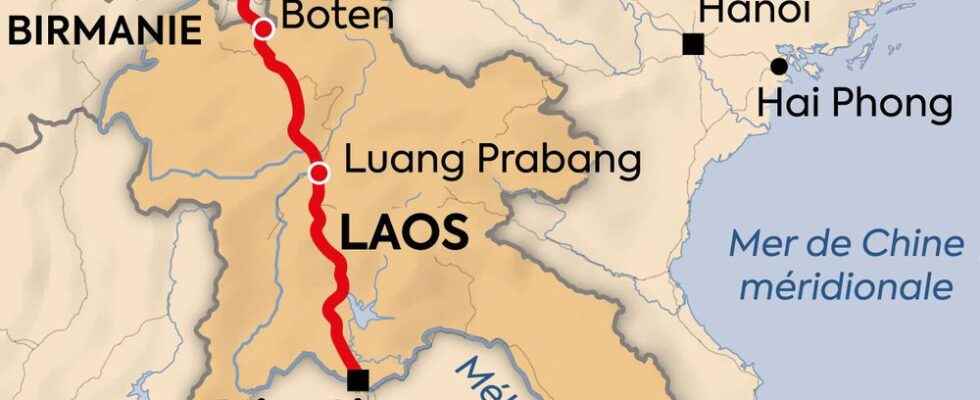Until now, Laos only had a 3.5 kilometer railway line, which connected a border post to Thailand via a bridge crossing the Mekong. On December 3, this country made a spectacular leap by inaugurating a high-speed line of 1035 kilometers built by China and connecting Kunming, in the province of Yunnan (south of the Asian giant) to the capital Vientiane.
This line, whose 414 kilometer Laotian section runs through superb mountain and forest landscapes, is a key link in the New Silk Roads launched by Beijing – a global infrastructure network. Its construction, carried out in five years by thousands of workers and engineers – mainly Chinese – is a technical feat: on the Laos side, it was necessary to dig 75 tunnels and build 165 bridges. The works, however, expropriated some 4,400 peasants, many of whom complained that they had not been sufficiently compensated.
Dario Ingiusto / L’Express
“Debt Trap”
On this line run TGVs in the colors of Laos as well as convoys transporting freight from and to China. A reduction in costs compared to maritime routes. During the inauguration, Chinese President Xi Jinping promised, in a video message, a “common future” for the two countries. Many experts nevertheless wonder about this unbalanced relationship. The project, which cost 5.9 billion dollars, is 70% controlled by three Chinese state companies and 30% by a Laotian public company. 60% of the financing is provided by loans from the Chinese bank Exim Bank – for 1.54 billion dollars. And that’s the rub. According to the World Bank, the debt of Laos, one of the least developed countries on the planet, amounted in 2020 to 13.3 billion dollars (or 72% of GDP), held for almost half by China. It is difficult to imagine how Vientiane, in the context of the pandemic, will be able to honor the repayment of a foreign debt which, according to the rating agency Fitch Ratings, will reach 1.16 billion per year between 2022 and 2025.
Several observers fear that Laos will be sucked into the “debt trap”, like Sri Lanka which, in 2017, unable to repay the construction of a deep-water port, had to give it up to a Chinese company. Laos already gave up the majority of its shares in the public electricity company, which was crumbling under debt, to a Chinese actor last year.
For the Asian Development Bank, it “is unlikely that this train will bring major economic benefits” to the country. And the World Bank estimates that Laos, whose population (7.3 million inhabitants) is largely rural, “will only fully benefit” if it improves the quality of the road network connected to the railway.
A major problem, the convoys are currently stopping in Vientiane. However, in the eyes of Beijing, it is important that this route “joins Thailand and Malaysia – as far as Singapore – to open up to all of Southeast Asia”, comments Ruth Banomyong, from the Thai University Thammasat. The Middle Kingdom has been negotiating for years the extension of the line with these three countries… which themselves do not seem in a hurry to comply with Chinese conditions.
